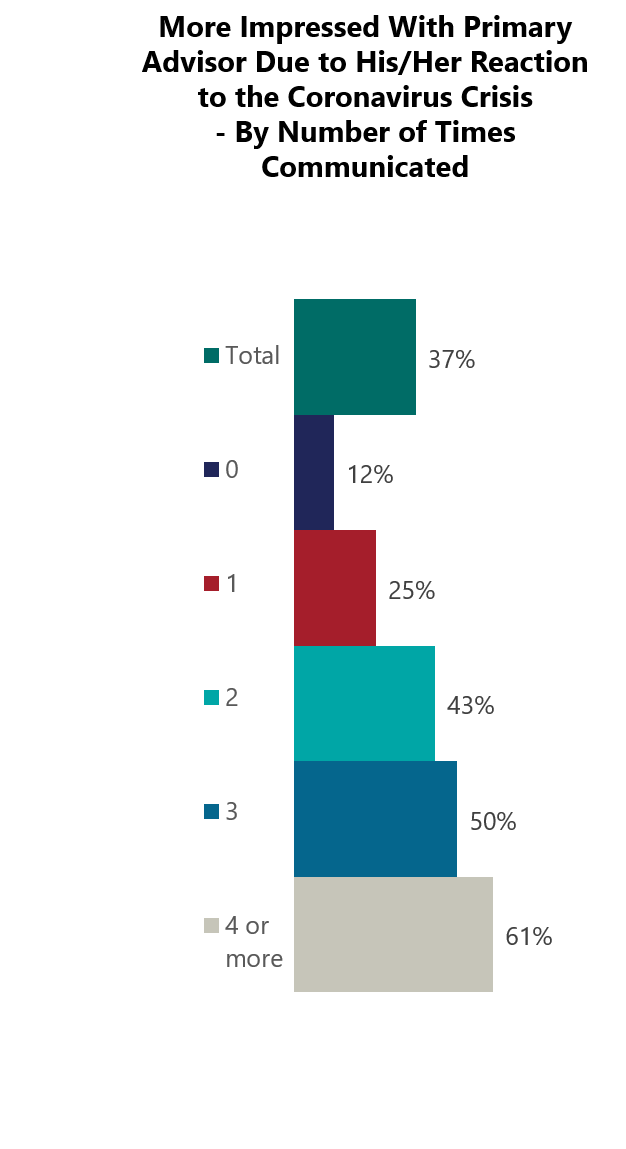The year of 2020 has brought about significant changes for nearly everyone in the world.
Individuals are having to change how they communicate and visit with their loved ones, alter their methods of shopping, religious practices, medical care, and working. There have been changes as well with how wealthy investors interact with their financial professionals. These changes are not likely to go away soon and financial professionals need to ensure that they are modifying how they interface with their clients now and going forward.
Prior to 2020, telephone was by far the most common method of communicating with a financial professional. Less than a third of investors communicated with their financial professional at least monthly, with two-thirds of investors communicating less often, according to research from Spectrem Group. An equal amount of investors communicate with their financial professional via email. However, the method of communication and frequency changes significantly when looking at various age groups.
Millennials have grown up with a very different comfort level with electronic communications. Communicating through email or electronic means is something that they have been familiar with their entire lives. When communicating with financial professionals, over half of Millennial investors communicate with their advisor via email at least monthly. Fifty percent of wealthy Millennials communicate with their advisor through text at least monthly. Over a third of Millennials even communicate with their advisor through video-chat at least monthly.
This communication frequency through text and video-chat is in stark contrast to WWII and Baby Boomer investors. Less than four percent of wealthy Baby Boomers and WWII investors communicate with their advisor via video-chat at least monthly. This year has brought about an uncomfortable change for these investors, with video-chat, email and online communications becoming far more common as a method to cope with physical distancing measures that have been in place for many months.
In the first quarter of 2020, over a third of investors had not heard from their financial professional, with the majority of those individuals being okay with that. A few months later and just over 10 percent of individuals had still not heard from their financial advisor. The majority of investors have been pleased with the contact they received since the coronavirus became a prevalent issue and the market declined. In fact, the greater the frequency of communication with their advisor, the more impressed the investor is with their advisor. Nearly two-thirds of investors who have communicated with their financial advisor 4 times or more since the coronavirus are more impressed with their advisor.

Communication methods have changed significantly, and now that video-chat and virtual contact has become a common part of our communication landscape, it is likely to remain that way. Financial advisors need to ensure that they have safe and effective methods to work with their clients. Younger clients are going to require the ability to communicate via video-chat and texting, while older clients may require that as well as face-to-face communication with proper precautions taken.

